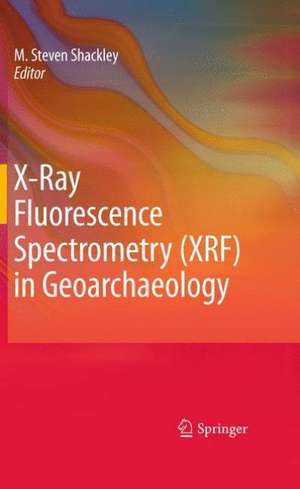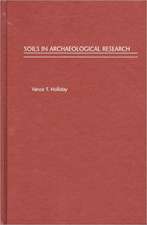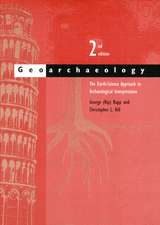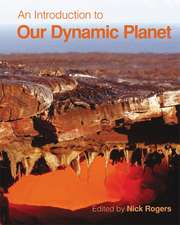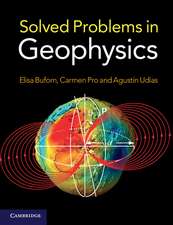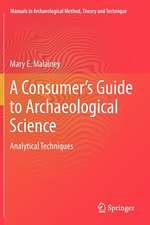X-Ray Fluorescence Spectrometry (XRF) in Geoarchaeology
Editat de M. Steven Shackleyen Limba Engleză Hardback – 21 oct 2010
Currently, there is no comprehensive book in XRF applications in archaeology at a time when the applications of portable XRF and desktop XRF instrumentation are exploding particularly in anthropology and archaeology departments worldwide.
The contributors to this volume are the experts in the field, and most are at the forefront of the newest applications of XRF to archaeological problems. It covers all relevant aspects of the field for those using the newest XRF technologies to deal with very current issues in archaeology.
| Toate formatele și edițiile | Preț | Express |
|---|---|---|
| Paperback (1) | 385.84 lei 43-57 zile | |
| Springer – 22 feb 2012 | 385.84 lei 43-57 zile | |
| Hardback (1) | 395.47 lei 43-57 zile | |
| Springer – 21 oct 2010 | 395.47 lei 43-57 zile |
Preț: 395.47 lei
Nou
Puncte Express: 593
Preț estimativ în valută:
75.68€ • 78.53$ • 63.26£
75.68€ • 78.53$ • 63.26£
Carte tipărită la comandă
Livrare economică 17-31 martie
Preluare comenzi: 021 569.72.76
Specificații
ISBN-13: 9781441968852
ISBN-10: 1441968857
Pagini: 248
Ilustrații: XIV, 231 p. 32 illus., 11 illus. in color.
Dimensiuni: 155 x 235 x 23 mm
Greutate: 0.59 kg
Ediția:2011
Editura: Springer
Colecția Springer
Locul publicării:New York, NY, United States
ISBN-10: 1441968857
Pagini: 248
Ilustrații: XIV, 231 p. 32 illus., 11 illus. in color.
Dimensiuni: 155 x 235 x 23 mm
Greutate: 0.59 kg
Ediția:2011
Editura: Springer
Colecția Springer
Locul publicării:New York, NY, United States
Public țintă
GraduateCuprins
Introduction: Why XRF in Archaeology?- X-Ray Fluorescence Theory and Method.- Factors Affecting the Energy-Dispersive X-Ray Fluorescence (EDXRF) Analysis of Archaeological Obsidian.- Non-destructive EDXRF analyses of archaeological basalt.- Non-Destructive Applications of Wavelength XRF in Obsidian Studies.- Comparison and contrast between NAA and XRF: trace element analysis of the obsidian sources in central Mexico.- INAA versus XRF in Basalt Studies.- PXRF of archaeological artifacts: potentials and limitations.- Is There a Future for XRF in a 21st Century Archaeology?
Notă biografică
M. Steven Shackley is Professor of Anthropology and Director of the Berkeley Archaeological XRF Laboratory at the University of California, Berkeley.
Textul de pe ultima copertă
Since the 1960s, x-ray fluorescence spectrometry (XRF), both wavelength and energy-dispersive have served as the workhorse for non-destructive and destructive analyses of archaeological materials. Recently eclipsed by other instrumentation such as LA-ICP-MS, XRF remains the mainstay of non-destructive chemical analyses in archaeology, particularly for volcanic rocks, and most particularly for obsidian. In a world where heritage and repatriation issues drive archaeological method and theory, XRF remains an important tool for understanding the human past, and will remain so for decades to come.
Currently, there is no comprehensive book in XRF applications in archaeology at a time when the applications of portable XRF and desktop XRF instrumentation are exploding particularly in anthropology and archaeology departments worldwide.
The contributors to this volume are at the forefront of the newest applications of XRF to archaeological solutions. It covers all relevant aspects of the field for those using the newest XRF technologies.
Currently, there is no comprehensive book in XRF applications in archaeology at a time when the applications of portable XRF and desktop XRF instrumentation are exploding particularly in anthropology and archaeology departments worldwide.
The contributors to this volume are at the forefront of the newest applications of XRF to archaeological solutions. It covers all relevant aspects of the field for those using the newest XRF technologies.
Caracteristici
No other volume examining recently technological advances of XRF for archaeological uses Contributors are archaeologists, geologists, chemists and physicists Guidance with this technology is invaluable for those working at historically or culturally sensitive sites where non-destructive analysis of archaeological materials is imperative Includes supplementary material: sn.pub/extras
Descriere
Since the 1960s, x-ray fluorescence spectrometry (XRF), both wavelength and energy-dispersive have served as the workhorse for non-destructive and destructive analyses of archaeological materials. Recently eclipsed by other instrumentation such as LA-ICP-MS, XRF remains the mainstay of non-destructive chemical analyses in archaeology, particularly for volcanic rocks, and most particularly for obsidian. In a world where heritage and repatriation issues drive archaeological method and theory, XRF remains an important tool for understanding the human past, and will remain so for decades to come. Currently, there is no comprehensive book in XRF applications in archaeology at a time when the applications of portable XRF and desktop XRF instrumentation are exploding particularly in anthropology and archaeology departments worldwide. The contributors to this volume are the experts in the field, and most are at the forefront of the newest applications of XRF to archaeological problems. It covers all relevant aspects of the field for those using the newest XRF technologies to deal with very current issues in archaeology.
